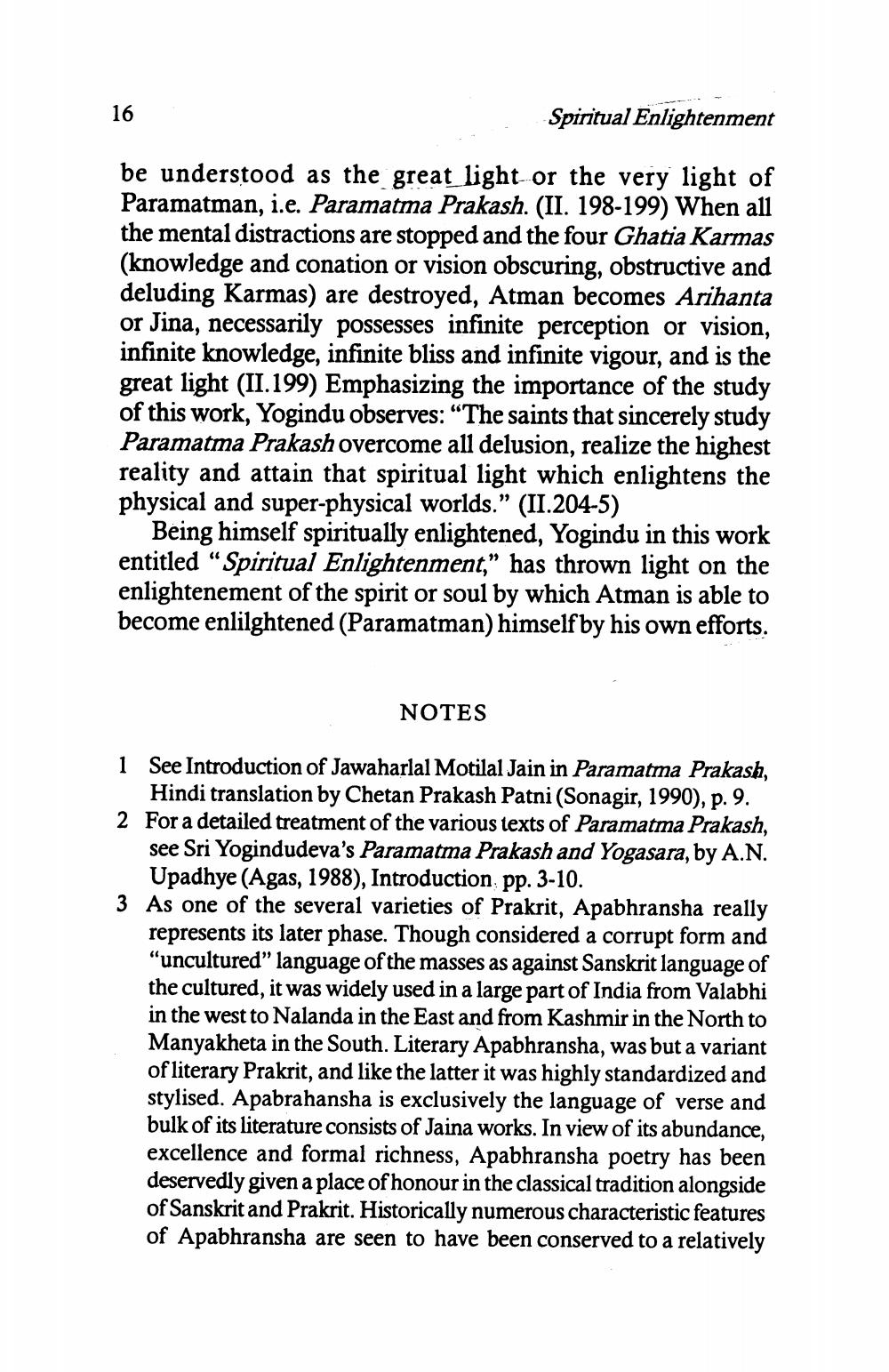________________
Spiritual Enlightenment
be understood as the great light or the very light of Paramatman, i.e. Paramatma Prakash. (II. 198-199) When all the mental distractions are stopped and the four Ghatia Karmas (knowledge and conation or vision obscuring, obstructive and deluding Karmas) are destroyed, Atman becomes Arihanta or Jina, necessarily possesses infinite perception or vision, infinite knowledge, infinite bliss and infinite vigour, and is the great light (II.199) Emphasizing the importance of the study of this work, Yogindu observes: “The saints that sincerely study Paramatma Prakash overcome all delusion, realize the highest reality and attain that spiritual light which enlightens the physical and super-physical worlds.” (II.204-5)
Being himself spiritually enlightened, Yogindu in this work entitled “Spiritual Enlightenment,” has thrown light on the enlightenement of the spirit or soul by which Atman is able to become enlilghtened (Paramatman) himself by his own efforts.
NOTES
1 See Introduction of Jawaharlal Motilal Jain in Paramatma Prakash,
Hindi translation by Chetan Prakash Patni (Sonagir, 1990), p. 9. 2 For a detailed treatment of the various texts of Paramatma Prakash,
see Sri Yogindudeva's Paramatma Prakash and Yogasara, by A.N.
Upadhye (Agas, 1988), Introduction pp. 3-10. 3 As one of the several varieties of Prakrit, Apabhransha really
represents its later phase. Though considered a corrupt form and "uncultured” language of the masses as against Sanskrit language of the cultured, it was widely used in a large part of India from Valabhi in the west to Nalanda in the East and from Kashmir in the North to Manyakheta in the South. Literary Apabhransha, was but a variant of literary Prakrit, and like the latter it was highly standardized and stylised. Apabrahansha is exclusively the language of verse and bulk of its literature consists of Jaina works. In view of its abundance, excellence and formal richness, Apabhransha poetry has been deservedly given a place of honour in the classical tradition alongside of Sanskrit and Prakrit. Historically numerous characteristic features of Apabhransha are seen to have been conserved to a relatively




